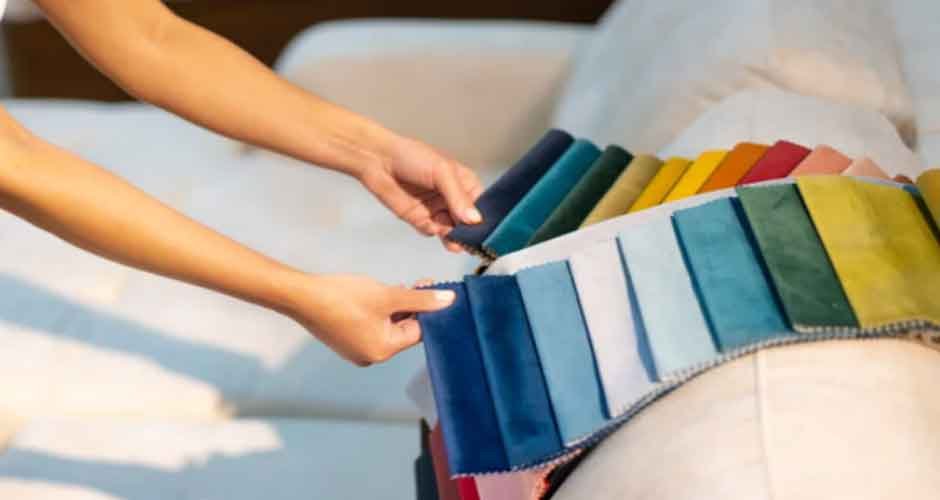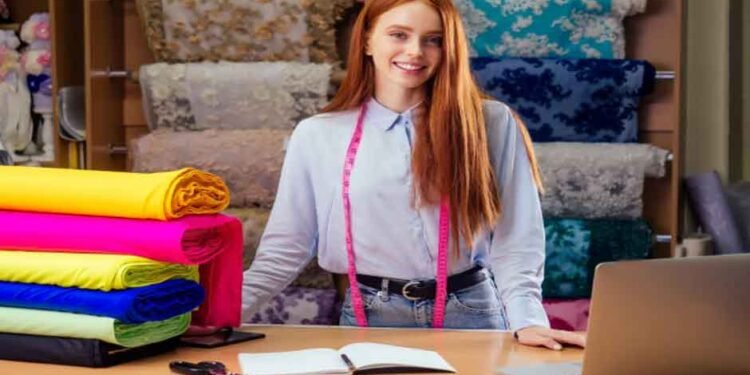When you’re into sewing and dressmaking, the fabric aisle can be overwhelming, with rows upon rows of colourful textiles tempting you with their patterns. With so much variety, it’s easy to give in to the urge to buy a bolt without really considering how it will impact your project.
But here’s the thing, choosing the wrong fabric can turn your dream project into a nightmare. Imagine spending hours meticulously stitching together a garment, only to realise it doesn’t drape quite right or feels scratchy against your skin. Ouch, right?
By sewing smart and selecting the right fabric for your project, you can avoid these pitfalls and ensure that your creations are as beautiful as they are functional. So, let’s break it down and explore how to choose the right option for sewing endeavours.
Do Your Research

Start by learning as much as you can about the type of clothing item you intend to make. To do so, you could visit actual clothing stores and observe the merchandise and fabrics that are on display. Nothing is more important than being able to feel and touch a garment to understand the function of the fabric. This gives you an idea of the types of textiles that are in style and helps your ideas feel a bit more contemporary.
If you don’t have the time to go out, you can always browse Pinterest or similar sites for inspiration. You can also look for a reputable online fabrics store and see what they have on offer. Many stores list which garments their fabrics are best suited for, and this can be extremely helpful.
Check How the Fabric Drapes
When shopping for fabric at a physical and not an online fabrics store, always unroll a few metres of the bolt and test how it hangs. The fabric’s hang or ‘drape’ will be an important factor in how the garment looks when you’re wearing it.
For instance, silk drapes nicely, whereas linens stick out when pleated or gathered because they are heavier. For many, the most important factor in choosing something that suits the function and looks good is the fabric’s drape.
Pay Attention to the Colour

Colours can appear different in artificial lighting than they do in natural light. This is often the case with shop lighting or photos uploaded by online fabric stores. Having said that, if at all possible, try to examine the fabric outside in broad daylight, or at least next to a window, before making a purchase.
Make sure to hold the fabric up to your skin when creating anything for yourself so you can see how it looks on you. When the textile is fashioned into a garment, it might not stand out as much if it is too similar to your skin tone.
The Patterns Matter Too
When beginning out in sewing, do not make things too difficult for yourself by selecting a pattern that you will want to ‘pattern match’ at the seams, such as stripes or a repeated pattern. If you need to match patterns, you will normally need more fabric, so keep that in mind.
It helps beginners to start with abstract patterns, such as florals. Begin with simple concepts and work your way up to more complex patterns. You should also assess whether your pattern has a directional component. For continuity, ensure that all of your pattern pieces are put on your clothes the same side up.
Check How the Textile Stretches
It’s crucial to realise that most textiles will stretch somewhat, particularly when pulled across the grain diagonally. What type of stretch is suitable depends on what you are making and your skill level. Many beginners like a minimum stretch since it is easier to work with and has more natural wear and fall. Avoid purchasing lycra or jerseys if you are not skilled at sewing stretchy materials since they can be more challenging.
Have a Clear Idea of What You’re Making
Make an effort to visualise the project in the chosen textile. Think about the colour and drape of the desired garment—will it look better in thicker linen or lighter silk? And don’t forget to take the wearer’s body shape into account. Compared to light silks, heavier materials are more figure-forgiving, particularly for easier sewing projects with less structure.
The Best Fabrics for Beginners
Cotton Lawn and Poplin

Some of the easiest-to-sew materials are cotton lawn and cotton poplin. These are lightweight, tightly woven textiles with a crisp hand and silky texture. They are a little lighter than regular cotton quilting pieces but otherwise similar.
Cotton lawn and poplin are used to make breezy casual shirts and summer skirts. Because they are so robust, these are some of the most popular clothing materials. They are also fairly priced, readily available at most fabric stores, and simple to iron.
Cotton Voile
Light and semi-sheer, cotton voile has some drape to it. It comes in a range of patterns and solid colours. Summer shirts and coverups are the most popular items made with this cloth.
Cotton voile is easy to cut and sew because it is strong and pressable. This is a great option if you are looking for something sheer and airy that can be turned into a flowing dress. It’s one of the easiest textiles to drape; other drapey materials are slick and challenging to cut and sew accurately, so novices should not attempt working with them.
Flannel
Flannel is a fuzzy-feeling, medium-weight cotton fabric that is comfortable and warm. It is frequently utilized for baby clothes, pyjamas, shirts and winter clothing. It’s a soft, yet sturdy fabric that cuts and sews easily.
Moreover, flannel comes in lovely patterns like plaids, perfect for hiding stitching errors. Large-scale prints and plaids should be avoided when choosing a print since they need pattern matching, which makes the project more complex. Instead, choose small-scale designs.
Linen
Linen fabrics are made from flax plant fibres. Linen is a natural textile that feels good on the skin and helps the wearer stay cool. However, it tends to wrinkle, so it is best used for casual attire.
Medium-weight, plain-weave linen is a durable fabric that is simple to cut and sew. Avoid lightweight linens (these are sheer and will require lining) and loosely woven linens that are prone to tearing.












